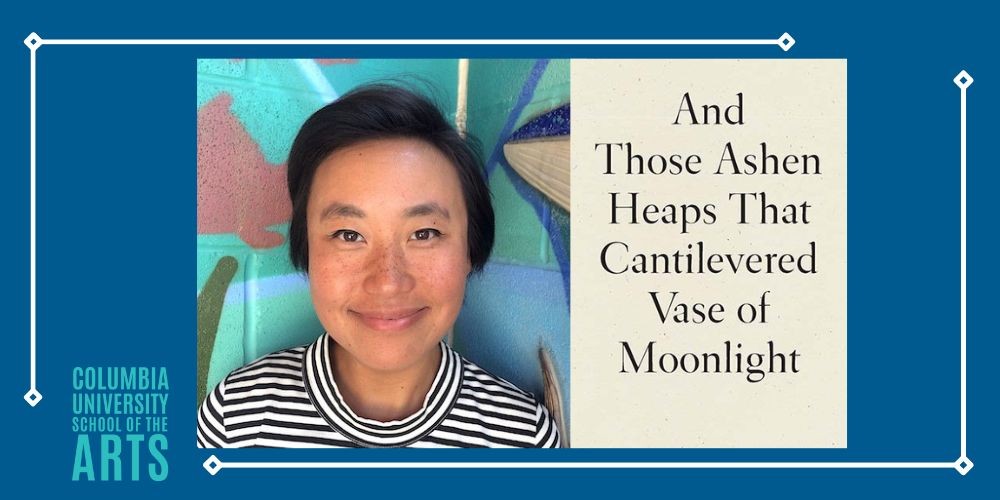Writing Assistant Professor Lynn Xu will partake in a solo exhibition of her book-length poem And Those Ashen Heaps That Cantilevered Vase of Moonlight at the Museum of Contemporary Art Tucson. The exhibition, which was commissioned by Laura Copelin, will be available for viewing from November 4, 2022 to January 8, 2023.
Although Xu had previously worked for Chinese visual artist Xu Bing, who creates large-scale text-based installations, Xu had not herself considered bringing this poem into a museum setting until Copelin had suggested it.
The work seems ripe for it, however. Inherently sculptural and engulfing in its form, the poem is immediately immersive and abounds in “choral layers,” which fellow poet Angelo Mao, in his review of Xu’s book, points out “accumulate almost in echo…like a report from the end of time” and the far edges of language.
The soft and constant pings surrounding each word of this poem render a thin primordial veil that beckons a softer, centered form of listening. It is as though the poem creates a space, perhaps a cantilever, from which the reader may, too, experience the nuances that kept Xu engaged over the 10-year span during which this poem came into being: “what is this desire to live that keeps us in the relentless measure of the meantime?”
We recently asked Xu to elaborate on that question. Xu explained: “When I gave birth to my first daughter I thought: being born does not guarantee anything. It does not guarantee that your life will be liveable. It is simply an opening into the world."
This sense of a fragile opening onto a slow-paced vortex is well suited for the Museum of Contemporary Art Tucson, which is a museum sparse in walls and awash in windows. Along those walls Xu will project several portions of the poem’s text, and on its windows, words cut out from black vinyl will be hung. The air, too, will be used. Museum goers will encounter “recordings of Xu reading a section of the book in Mandarin…while passages read in English play on focused speakers, inviting intimate sonic encounters,” the exhibition’s press release notes.
The projected text will move, the windows will be partly blacked out, and the poem will transform into a different version of itself.
In this version, the poem will expand into a performance as well—and on November 4, the exhibition’s opening day, Xu will encourage viewers to join her in a dance party that will then morph back into a reading. It is bound to be an incredible experience and a mesmerizing experiment with form.
